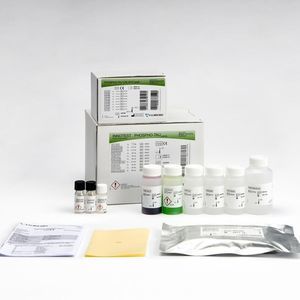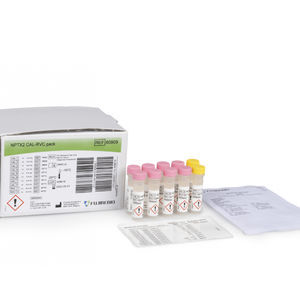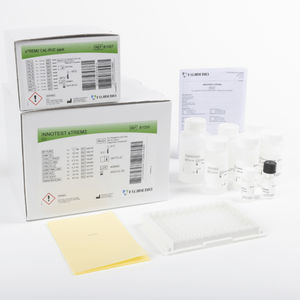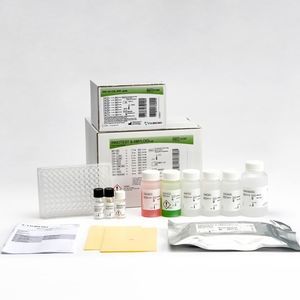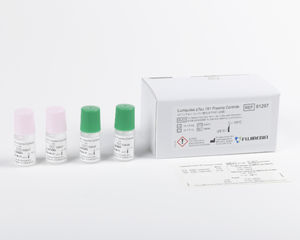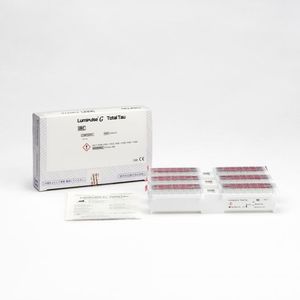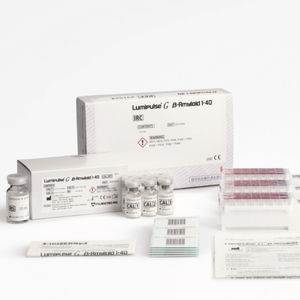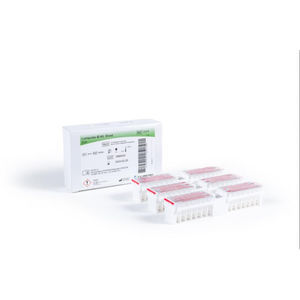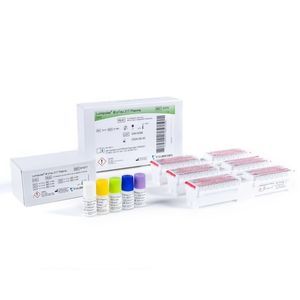
- Company
- Products
- Catalogs
- News & Trends
- Exhibitions
Research test kit Lumipulse®for neurodegenerative diseasesfor phosphorylated tau proteinclinical
Add to favorites
Compare this product
fo_shop_gate_exact_title
Characteristics
- Applications
- for research, for neurodegenerative diseases
- Tested parameter
- for phosphorylated tau protein
- Sample type
- clinical, blood, cerebrospinal fluid
- Analysis mode
- immunoassay, automated, chemiluminescence
- Format
- cassette
Description
Immunoassay to be used with the automated LUMIPULSE G System for the quantitative measurement of Tau phosphorylated at threonine 181 (pTau 181) in human plasma. This product is not for use in diagnostic procedures.
Details
Background
Alzheimer's disease, the most common form of dimentia, is a neurodegenerative disorder histologically characterized by the accumulation of intracellular neurofibrillary tangles and extracellular amyloid plaques throughout the cortical and limbic brain regions. The ultrastructure of neurofibrillary tangles is made up of paired helical filaments composed mainly of abnormally hyperphosphorylated Tau protein (pTau). The major components of the amyloid deposits are the 40- and 42-amino acid-long β-amyloid peptides, which are derived from integral membrane-bound amyloid precursor protein.
In Alzheimer's disease pathology, the phosphorylation of Tau protein is disturbed, leading to hyperphosphorylation and the emergence of new sites of phosphorylation.
The combination of decreased concentrations of β-amyloid1-42 and increased concentrations of total Tau and pTau is considered to be a pathological biomarker signature in cerebrospinal fluid (CSF) that is diagnostic for Alzheimer's disease.2,3 Today, CSF biomarker analysis has become part of routine clinical testing, however, measuring biomarkers in blood could improve future test strategies.
Current research indicates that plasma pTau, including pTau 181, is concordant with amyloid PET, and is able to differentiate between Alzheimer's disease and non-Alzheimer's disease neurodegenerative diseases and to predict progression to Alzheimer's disease.Blood-based biomarkers, such as plasma pTau,
Related Searches
- FUJIREBIO test kit
- FUJIREBIO solution reagent
- FUJIREBIO blood test kit
- FUJIREBIO serum test kit
- FUJIREBIO immunoassay test kit
- FUJIREBIO plasma test kit
- FUJIREBIO infectious disease test kit
- FUJIREBIO research reagent
- FUJIREBIO diagnostic reagent
- FUJIREBIO laboratory reagent
- FUJIREBIO protein reagent
- FUJIREBIO molecular biology test kit
- Enzyme reagent kit
- Whole blood detection kit
- FUJIREBIO respiratory disease test kit
- Histology reagent kit
- Optical assay kit
- FUJIREBIO clinical test kit
- Cassette assay kit
- Immunology reagent
*Prices are pre-tax. They exclude delivery charges and customs duties and do not include additional charges for installation or activation options. Prices are indicative only and may vary by country, with changes to the cost of raw materials and exchange rates.



